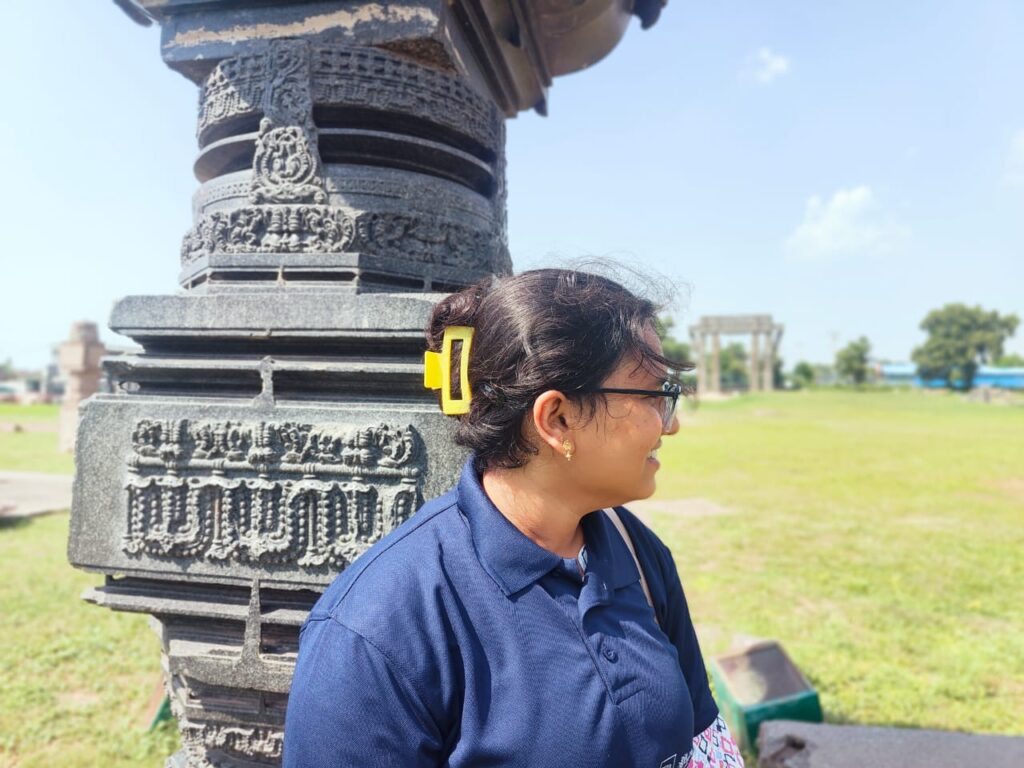
World Heritage Volunteer (WHV) Program is an initiative that was launched by UNESCO, in 2008. This program aims to educate the youth about the significance of heritage, culture, and its preservation. I had the wonderful opportunity to participate in the WHV program at Ramappa Temple, organized by the Kakatiya Heritage Trust. I learned about this program from the website of the trust.
I’m a Graduate in Life Sciences, and my sheer passion for the Temples, Temple iconography, Ancient Indian History, and Indian Knowledge Systems compelled me to explore these boundless subjects. This camp was for 12 days, packed with theory classes and field visits. On the personal front, I got a chance to connect with people from various states. This was also a good time for me to understand the expertise of every department like architecture, civil engineering, history, archaeology, geology and tourism, with regard to the research, analysis, preservation and promotion of the heritage.
Activities at the camp
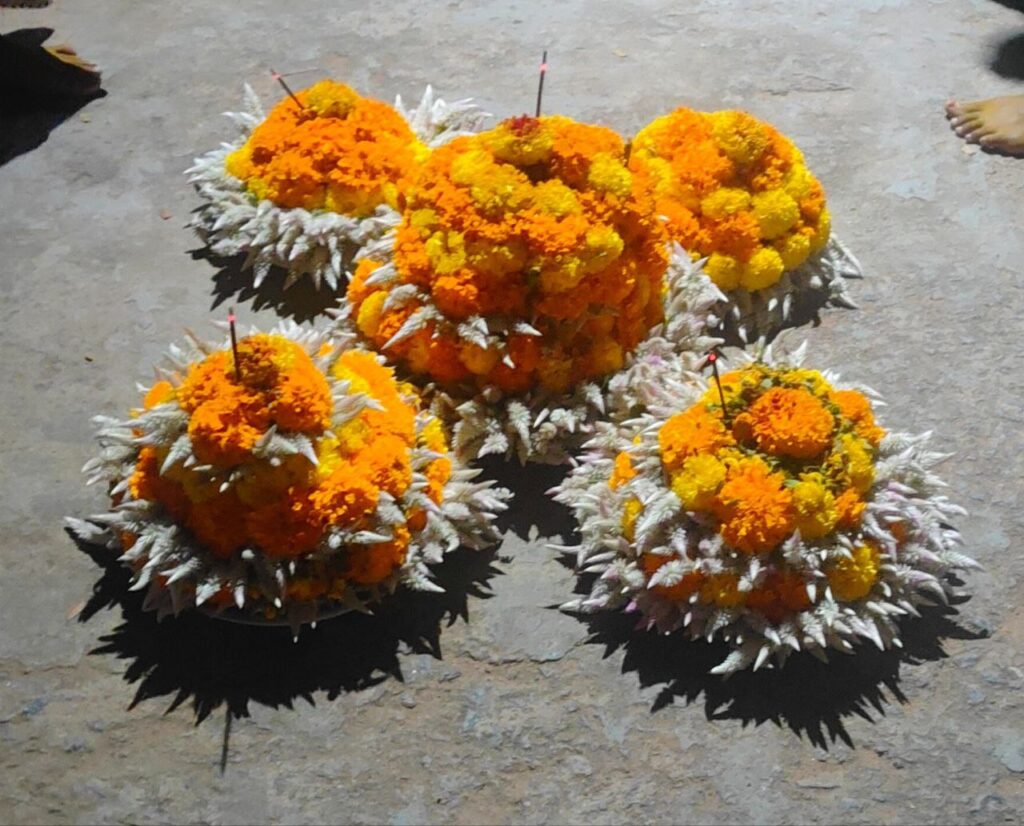
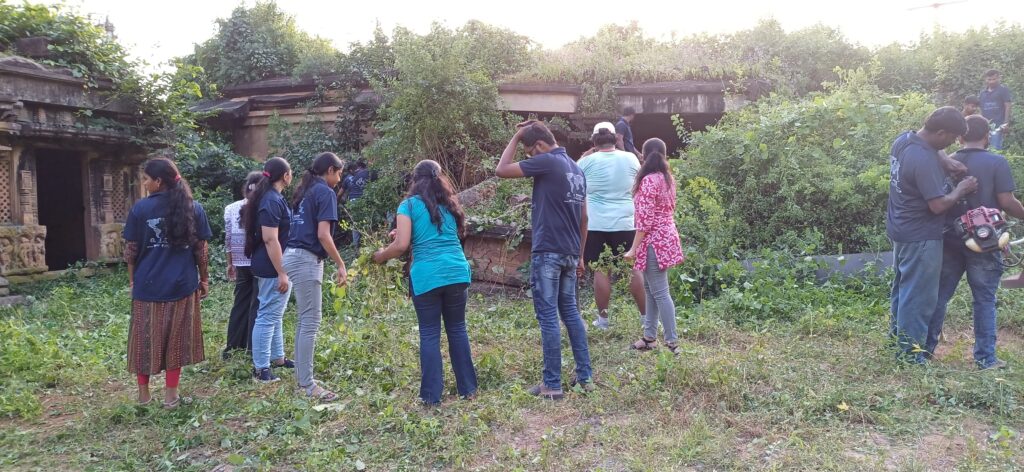

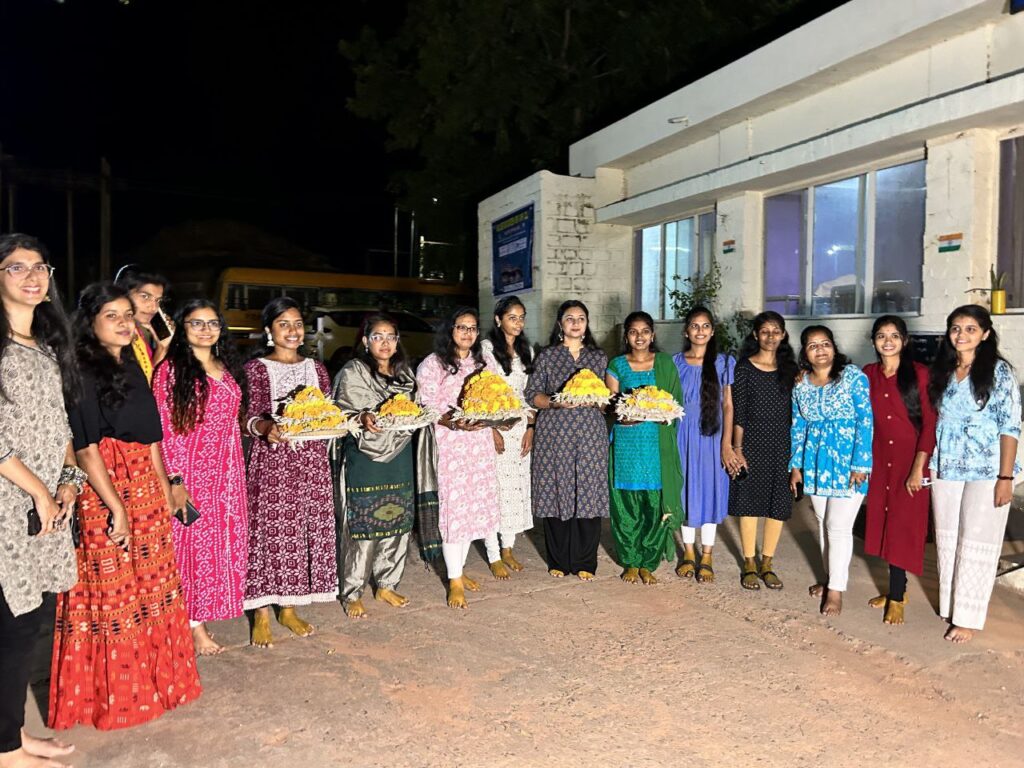
The head persons of the trust want us to inculcate self-discipline and fitness into our routine, so the mornings at the camp started with Yoga classes. We had refreshing and relaxing yoga classes in a calming open space under the guidance of a Yoga instructor. Telangana Tourism sponsored our stay at the Haritha Lake View Resorts at Ramappa, and we all had a good time, nestled by the panoramic view of the enormous Ramappa Lake spanning a 56 km radius. On the fourth and fifth days of the camp, we cleaned and cleared the vegetation in and around the Trikutalyam, which is located adjacent to the resorts. Our heritage architect teammates explained about the adverse effects of vegetation growth on old monuments. We enjoyed the boating at Laknavaram Lake, which was also an artificial lake created during the Kakatiya’s rule. Trekking to Pandavula Gutta was adventurous. The stunning formations of rocks are truly a masterpiece of nature. There are beautiful rock paintings to behold.

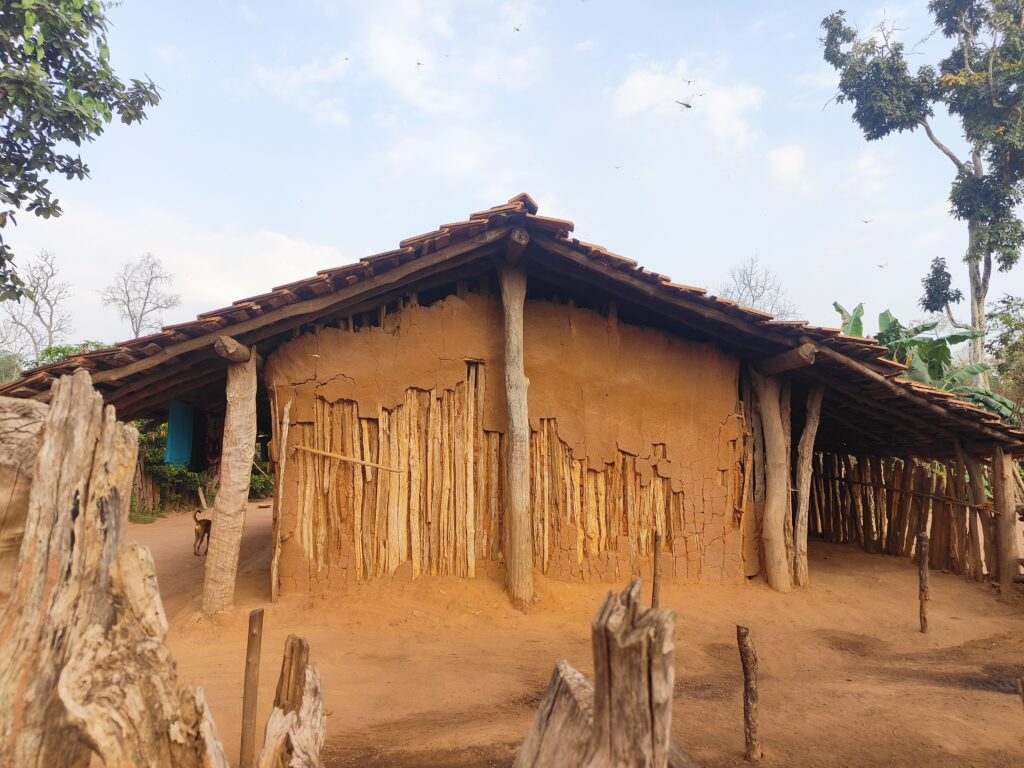
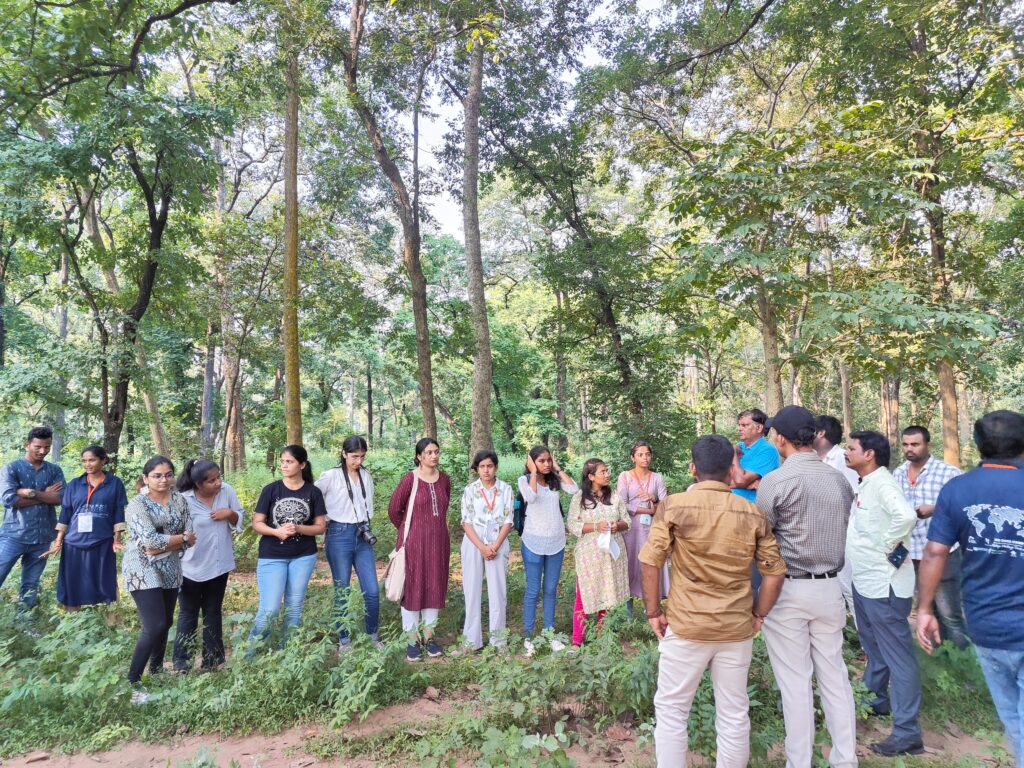
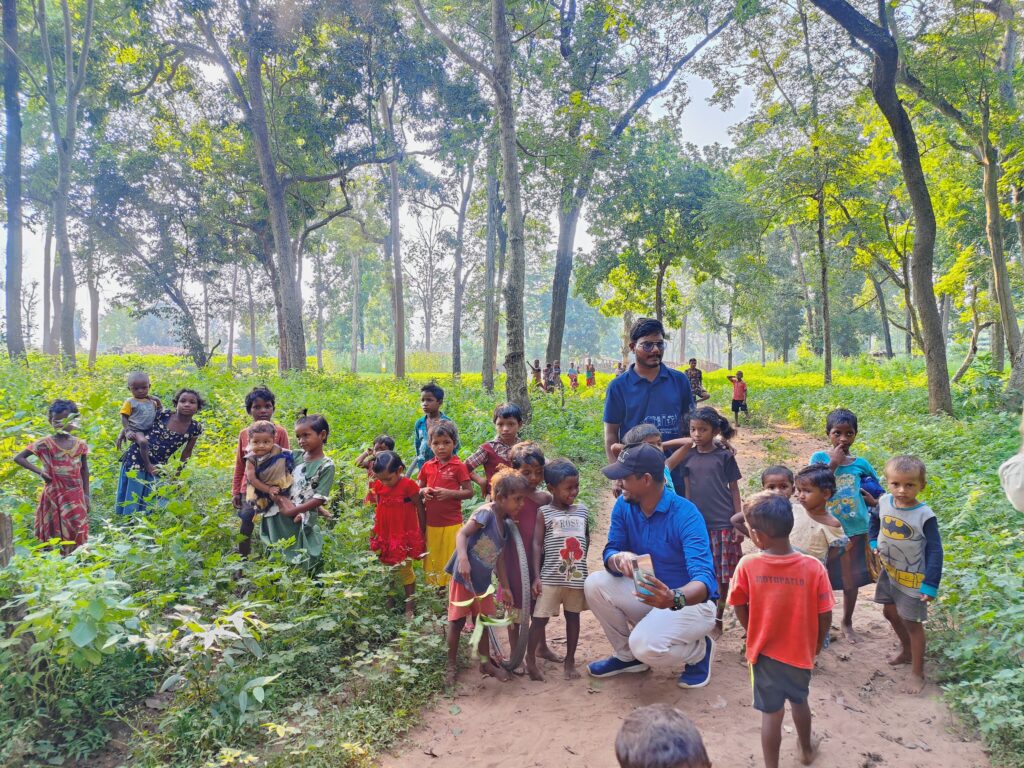
Walking in the woods of Chintalamori near Vajedu with my friends to watch the Kommu dance performed by the Koya tribe was a unique experience. We had visited their settlements made of sticks and mud walls. Children at the Koya habitation were so curious about our presence that they followed us to the place where their family elders were performing dance. They were so innocent and adorable that they shyly posed for pictures. It was an enchanting experience to witness Perini Shivatandavam dance form, a fierce yet graceful performance, sitting in the Ranga mandapa of the temple premises. It was lively and spiritual. On the last day of camp, the trust members organised the celebrations of the Bathukamma festival. It is Telangana’s state festival. Most of my friends from other states were intrigued and excited to celebrate this festival of flowers. Ramappa temple has iconographic depictions of Kolatam dance. To demonstrate that dance form, the trust had invited a group of Kolatam dancers from the nearby Palampet village. It was indeed a memorable occasion to remember in this course of 12 days.
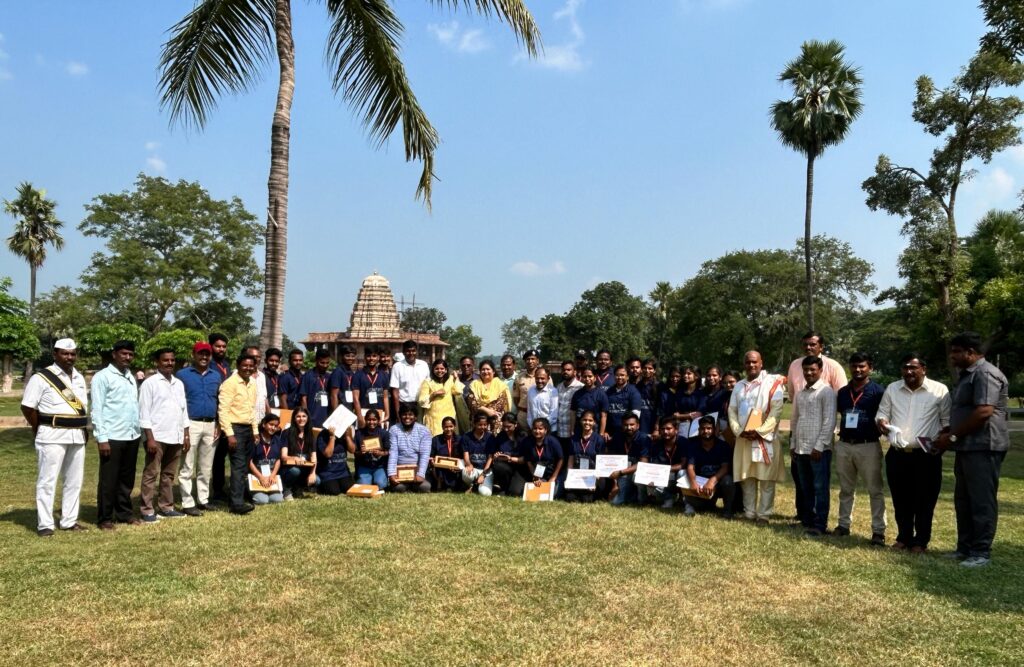
Main theme of the camp
The main theme of the camp is “Working on the future” for 2023. I could genuinely understand the motto, and the meaning behind the theme during my stay at the camp. We, as volunteers, were chosen by the organization to learn, explore, and preserve the heritage of this region.
Though Telangana’s separation in terms of geography and as a political unit from Andhra Pradesh was on 2nd June 2014, the culture, customs, heritage, and history predate to a much earlier period. There is only limited coverage regarding Telangana’s history, including its dynasties, culture, and architectural heritage. Unfortunately, this youngest state of India has not gained much spotlight in mainstream history. There wasn’t much coverage of Telangan’s ancient history in CBSE social textbooks as well.
Throughout my tenure in this camp, I got first-hand information about Telangana’s ancient history from the lectures and the field visits. Primarily, the focus was on the state of affairs, history, and technological advancements during the reign of Kakatiyas, and the Ramappa Temple. I gained exposure in both the fields of heritage, i.e., Tangible and Intangible. Speakers from diverse educational backgrounds have come to deliver their lectures on various areas of subjects such as Architecture, Civil engineering, Geology, History, Tourism, Heritage Management, and Conservation. I specifically joined the team to explore the History, Temple architecture, and Iconography aspects. However, in return, I realized the importance of the aforementioned departments in understanding, and maintaining the heritage.
People in the past were not only skilled at constructing impressive buildings but also had a deep concern for ensuring the sustainability of these magnificent structures for their future generations. Sthapathis, builders and rulers in those days had foresight about natural calamities, invaders, and other threats that a tangible structure might possess. So they thought of advanced technologies and strategies for the survival of these massive structures which define their glory and uniqueness. Thousand Pillars temple and Ramappa temple are aseismically designed, to provide earthquake resistance using the Sand-box technology.
They could also calculate the load-bearing capacity of the Vimana of Ramappa Temple, and had used “Floating bricks”, to ease the burden on the whole structure. They had followed the ‘T-T-T’ (Temple-Tank-Town) as a thumb rule. From the lectures, I learned that Kakatiyas had built 46,000 artificial water tanks for irrigation and daily needs. Based on the above-mentioned observations, it is evident that the Kakatiya rulers were particular about the well-being of their people. They demonstrated this by investing in various resources such as arts, architecture, culture, and infrastructure. Most of the water bodies built by them are thriving to this date.
The theme of this year, “Working on the future”, is based on the fundamental concept that our ancestors, with their advanced knowledge, technology and implementation, have justified. We, the inheritors of this invaluable heritage should understand the importance of these ancient structures and customs.
Save our heritage
Preserving our heritage is the responsibility of the present-day youth because, it depends on us when it comes to the recognition, value and respect that we have towards our inheritance. If we, as responsible citizens fail to take proper measures to safeguard our heritage, then we can’t pass on these to our future generations. This could result in the diminishing of our cultural identity. It must be a duty of every person to carry on the legacy of our ancient monuments and traditions.
The Kakatiya Heritage Trust made an applaudable effort by bringing together people from diverse educational backgrounds. Every one of us had a unique approach and interpretation while observing the heritage structures, and perceiving the information. Post sessions and site visits, we were asked to give a presentation on what we could comprehend. Group discussions regarding our perspectives led to the cross-fertilization of our personal analysis and ideas. This aided in making collective decisions concerning the protection, understanding, and promotion of the heritage.
I would like to express my sincere gratitude to the trustees of Kakatiya Heritage Trust and all the collaborators who provided us (the volunteers) the golden opportunity to explore the tangible and intangible heritage of Telangana. We all are thankful to Mr. Sreedhar sir, for the hospitality and guidance.

